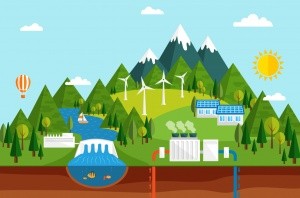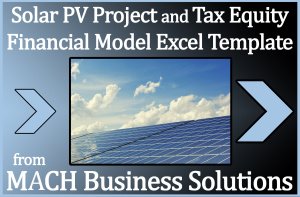
Renewable Energy Financial Models Start the discussion!

What is renewable energy?
Renewable energy is energy that is obtained from alternative, renewable resources such as sunlight, wind, rain, tides, waves and geothermal heat. Thus, renewable energies are heavily dependant on our environment and weather systems. There are numerous benefits to the use of renewable energies. For instance, renewable energies represent a much cleaner energy source than the fossil fuels that have often been used in the past such as coal and oil. Renewable energies are based on natural resources and thus have less of an environmental impact.
What are the different types of renewable energy?
Solar: Solar energy garners electricity directly from sunlight. Solar energy relies on the nuclear fusion power from the sun’s core, that is then transmitted in sunlight, and can be collected using solar panels. Solar energy is used in different ways and is becoming more and more commonplace, with many people now investing in solar panel installations on the roofs of their homes.
Wind power: The movement of wind can also be used as a source of energy. Air flows through wind turbines and powers the generators that then transform the wind energy into usable electrical energy.
Hydroelectric energy: Hydroelectric energy uses the movement of water as a source of energy, and currently accounts for 70% of all the renewable energy produced across the world. Hydroelectric dams convert the** gravitational potential of elevated water** and convert this into electrical energy.
Geothermal power: Geothermal power uses the energy that remains from the accretion of the planet. This energy seeps out slowly everywhere, all the time. In specific areas the geothermal gradient can be so high, that exploiting this energy is worthwhile. However, there are only a few places on earth where this can be achieved. Geothermal power can also be harnessed from the earth’s surface, with soil often remaining at a constant temperature. Heat pumps can be used from the surface to heat a building in winter and cool a building in summer.
What is the future of renewable energy?
The future of energy is hugely dependent on renewables. It has been predicted that the U.S. will be able to generate the majority of its energy from renewable sources by 2050. It is expected that, by this time, the United States will produce up to 80% of its energy from renewable sources. With the dwindling resources of fossil fuels, it has become increasingly important to invest in these renewable sources. These sources, such as gas, oil and coal have become incredibly unsustainable. As of 2016, renewables represented a fifth of the world’s electricity production, and this is rising year on year. Many countries have now committed to huge increases in renewable energy funding and installations, that, if executed, will see renewable energies provide the majority of the world’s energy. This shift towards new, renewable energies is also highlighted in the vehicle market. Electric vehicles are becoming more and more prominent, with countries, including India, committing to a complete electrification of vehicles by 2030.
Most popular Models
 Complete financial model for financing, building, operating, and selling solar farms.12,22412add_shopping_cart$35.00
Complete financial model for financing, building, operating, and selling solar farms.12,22412add_shopping_cart$35.00 by DW Financial Services
by DW Financial Services

Solar PV Project and Tax Equity Financial Excel Model
A full & professional 17 sheets Solar PV project and tax equity finance mode in Microsoft Excel.3,4559add_shopping_cart$175.00 by MACH BS
by MACH BS

Biogas Plant (Waste to Energy) Financial Model with 3 Statements, Cash Waterfall, NPV, & IRR and Flexible Timeline
Biogas Plant Model is a Project Finance Model for construction and operations of a biogas plant.1,5794add_shopping_cart$149.00 by Fin-Wiser Advisory
by Fin-Wiser Advisory

Green Hydrogen (Simple Electrolysis with on site Solar Plant) Financial Model
Green Hydrogen Production with Dispenser and transport cost.2,163Discussadd_shopping_cart$150.00 by Bassem Mneimné
by Bassem Mneimné

Hydro Project Finance Model (Excel Model & User Guide)
The excel model and user manual are designed to assist in the evaluation of typical hydro power projects.1,323Discussadd_shopping_cart$99.00 by FinExMod
by FinExMod

Start Up Wind Farm Excel Model and Valuation Template
Model that presents an investment in the construction of a wind farm and the sale of the energy generated from it.2,48414add_shopping_cart$99.00 by Big4WallStreet
by Big4WallStreet








